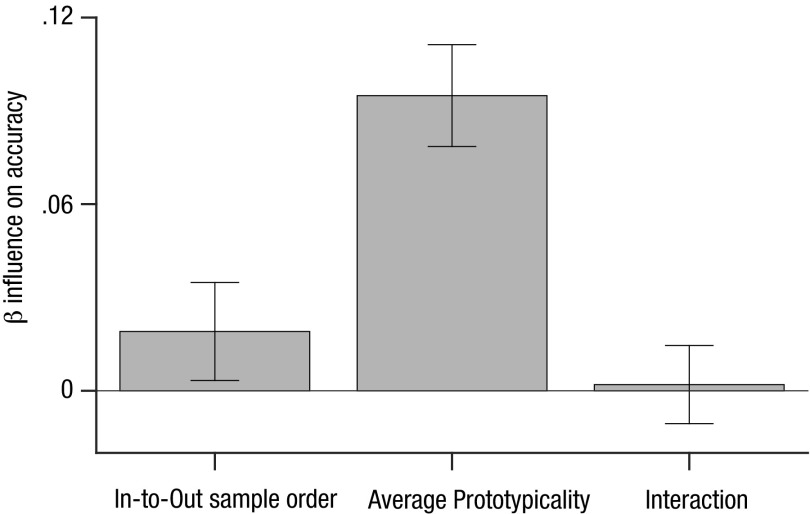Fig. S6.
Predicting human accuracy based on the sampling policy (preference for in- vs. outlying elements). Single-trial estimates of π are computed by correlating the order in which items were actually sampled with their ranked equivalent. To quantify the effect of sampling policy on accuracy in our dataset, we regressed this single-trial value of π (given the eye-movement trajectory on each trial) and the average prototypicality against accuracy—that is, used a probit regression to determine the extent to which these variables predicted whether participants would be correct (1) or not (0). Both the sampling policy [t(53) = 2.37, P < 0.05] and the average prototypicality [t(53) = 11.3, P < 0.001] show positive parameter estimates, indicating that participants were more likely to be correct when they pursued a policy of sampling inliers over outliers (positive values of π).

